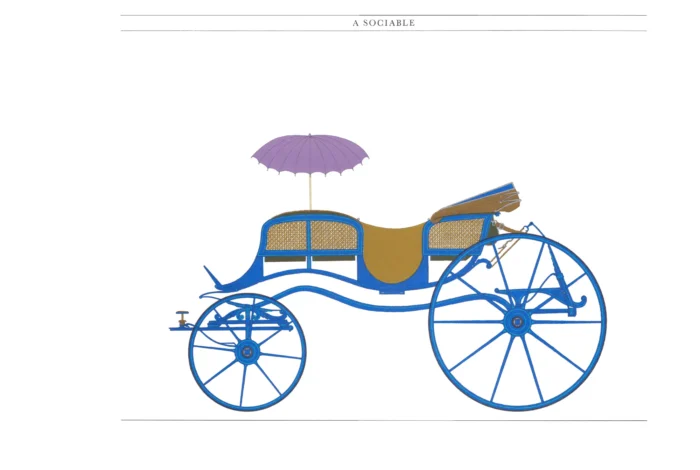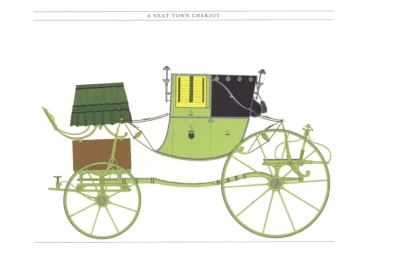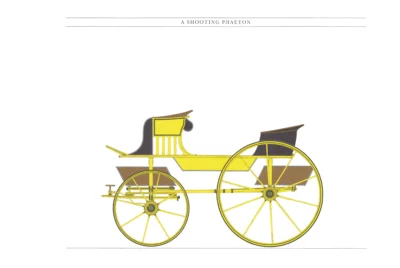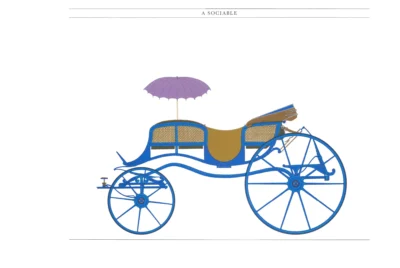Sociable
£20.00
iable (scroll down for a more detailed Description)
Published 1962 by © Hugh Evelyn Limited; drawn by Alan Osbahr
Size: c. 38 x 25.5 cm [14 ″ x 10 ″] – may vary slightly from printers’ cut 50 years ago
Printed on medium white cardstock weighing c. 140 g/sm2
Print is STANDARD size – shipping is the same for 1 to 10 prints (based on largest print size in your order) – see Shipping & Returns.
In stock
Description
Summary
A sociable (short for sociable coach) or barouche-sociable is an open, four -wheeled carriage described as a cross between a barouche and a victoria, having two double seats facing each other. It might be controlled from the interior by an owner-driver or have a box for a coachman. A pair of folding hoods protect the passengers. The carriage is drawn by either a single horse in shafts or a matching pair in pole gear. The Balmoral Sociable is a carriage of the Royal Mews (so named because its interior is lined with Balmoral tartan); it is still used on occasion. The Barouche-Sociable Carriage is a traditional carriage which dates back to the 1880s. This is often used in more traditional events and can be used with the canvas hoods down. Carriages called “sociables” were made in England during the 18th century. They were open coachman-driven carriages with two seats for passengers placed across the carriage and facing each other. According to Sir Walter Gilbey in his book “Modern Carriages” (1905), Sociables began to be built again in England about 1895 as open coachman-driven carriages for ladies. In America, a sociable is sometimes called a “vis-à-vis.”
Additional information
| Weight | 0.0136 kg |
|---|---|
| Dimensions | 37.5 × 25.5 cm |





